|
91. Limenitis populi (Linnaeus, 1758) / Poplar admiral / Nymphalidae – Limenitidinae
NL: grote ijsvogelvlinder / D: Groβer Eisvogel / F: grand sylvain
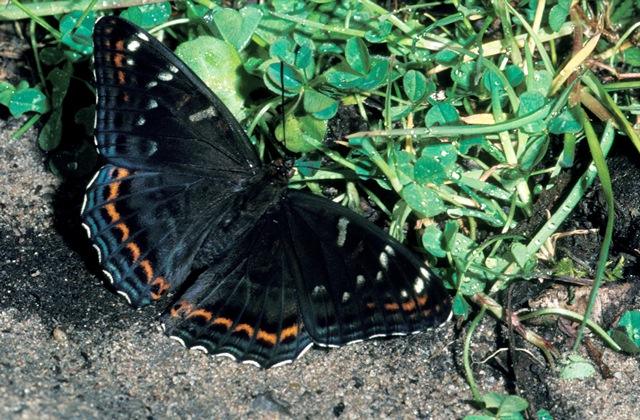 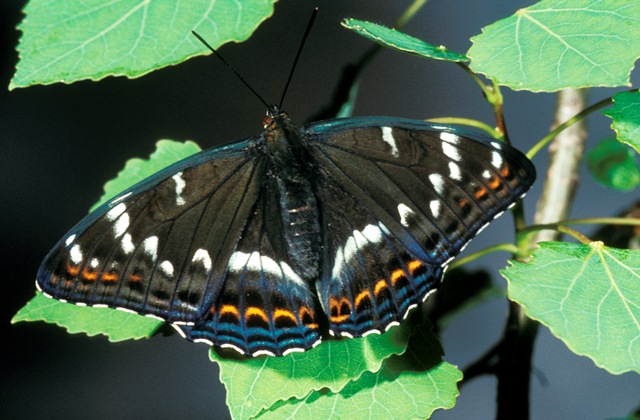 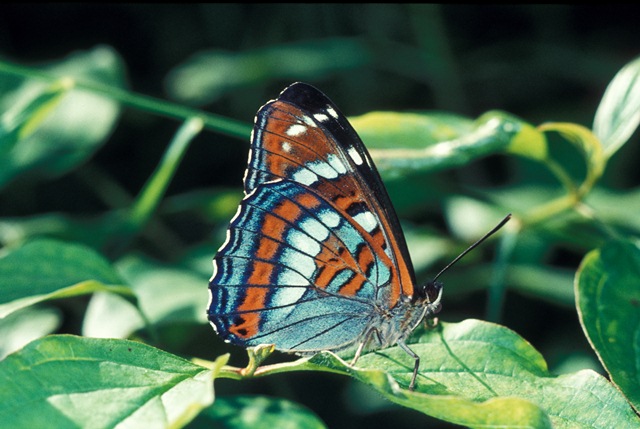
Photographs: Frits Bink ©.
Large or very large, wing length male 35 (32-38) mm, female 40 (36-43) mm. The largest butterfly of the fauna of the Benelux, inhabits large woods of the Ardennes in Luxemburg and Wallonia but is difficult to observe. In the Netherlands it occurs as a vagrant, though from 1948 until 1995 the butterfly was seen regularly and also larvae were found on the island of Terschelling.
Butterfly is on the wing from early-June until late-July. The species is known from continental climate, amplitude 8 to 20. The exception was Terschelling, a site in the cool maritime climate. Required heat sum is 400°d and maximum tolerated 1100°d, corresponding climate windows are 20 and 28 weeks.
Butterfly collectors tempt the insects by sprinkling some diluted ammonia on a road in the forest or use some strong smelling cheese. The adults spend most of their time high in the woodland canopy; however the eggs and larval hibernacula can be found on low bushes of poplar in the south facing edges of a copse.
Ecological characteristics
Behaviour over time
Overwintering: larva third instar, 8 mm in length, in a hibernaculum constructed by the larva from a folded leaf, which is attached to the twig using silk.
Reproduction: oviposition starts after about seven days when the body contains 60 (44-75) eggs, potential production 2.3 times as much. The maximum observed egg production was 215 (Sepp Weidemann).
Larval feeding periods: in summer 29 (23-34) days in period early-July until mid-August, in next spring about 25 days in period end-April until mid-June.
Generations: one.
Spreading of risk: not observed.
Life cycle: egg about 8 days; larva 47 weeks; pupa 18 (12-27) days.
Life span of adult: rather long, 3 weeks.
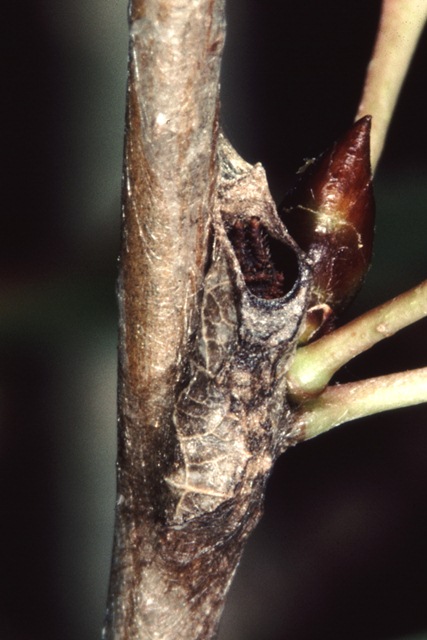 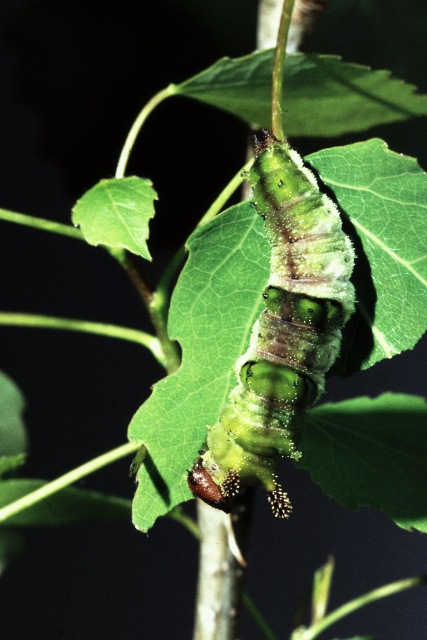
Photographs: Frits Bink ©.
Behaviour in space
From stay-at-home to migrant: stay-at-home, spatial requirement considerable.
Finding a mate: male patrols.
Orientation in the landscape: edges in woodland using a master tree as orientation point.
Oviposition: individually on the upper side of a leaf.
Defence
Threats from other organisms: behaviour and appearance of the larva and pupa are a masterpiece in misleading avian predators.
Threats from the environment: during the period the larva stays in its hibernaculum it is well protected.
Feeding habits
Adult: liquid from rotten material, small carrion and faeces.
Larva: larva saves the midrib of the leaf and uses this as a resting point, in spring it rests in a sphinx-like pose on the twig, it is than still brown in colour. In the last instar it is green and rests in a curled pose on the twig.
Larval foodplants
Plant species: Salicaceae, Populus tremula, P. nigra sometimes accepted.
Journal
Rearing experiments:
1. Based on specimens originating from Germany:
14 July 1980: eggs hatched.
23 July: larva second instar.
4 August: larva third instar, with white dorsal spot, mimicking a bird dropping.
14 August: larva constructed its hibernaculum.
17 August: larva left its hibernaculum several times for basking. After disturbance it returned immediately in to its hibernaculum.
Overwintered in fridge.
1 April 1981: first activity of the larvae observed.
5 April: larvae ate Populus nigra, because there was no P. tremula available. Two larvae in their hibernacula were dead, desiccated.
8 April: one larva last instar, grows very fast, eating young shoots of Populus nigra.
12 April: second larva pupated, pupa 23 mm in length, attached to the twig.
29 April: first pupa hatched.
2 May: second pupa hatched.
2. Based on specimen from Bayern, Germany:
25 July 1984: receipt of larva in moult L1-2.
31 July: larva in moult L2-3.
2 August: larva rested in its typical sphinx-like pose on the twig.
4 August: larva constructed its hibernaculum, this took five hours, including two pauses.
7 August: larva lived in its hibernaculum and left it to feed.
9 August; larva stopped eating.
Overwintered outdoors.
8 March 1985: larva regularly sprayed and had swollen and occupied the whole space of its hibernaculum.
25 March: tails extended out of it hibernaculum.
15 April: buds of the popular bursting, the larva left its hibernaculum.
19 April: larva started to eat and consumed the tip of the shoot. When disturbed it assumed a sphinx-like pose.
25 April: larva moulted, now fourth instar.
3 May: in moult L4-5.
6 May: moulted, changed its colour from brown to green.
13 May: larva ready to pupate.
14 May: pupated.
26 May: adult hatched, male.
Table 91-1. Results of dissections. Material provided by Sepp Weidemann 20 July 1985.

Table 91-2. Collection and observation localities
B, Ethe, 240 m, 49° 36’ 25”N – 5° 35’ 50”E; 11 July 1984.
EST, Endla Nature Reserve, 58° 52 34”N – 26° 16’21”E; 10 July 1999.
EST, Viruna, 58° 28’ 51”N – 23° 58’ 32”E; 5 July 1999.
S, Öland, Tävelsrum, 56° 37’ 55”N – 16° 32’ 23”E; 9 July1982.
S, Öland, Ullevi, 56° 37’ 04”N – 16° 38’ 08”E; 11 July 1982, 16 August 1983 (larva in hibernaculum).
Fig. 91-1. Limenitis populi, phenogram adapted from Fichefet et al. 2008: 227.

Fig. 91-2. Limenitis populi, habitat characteristics.
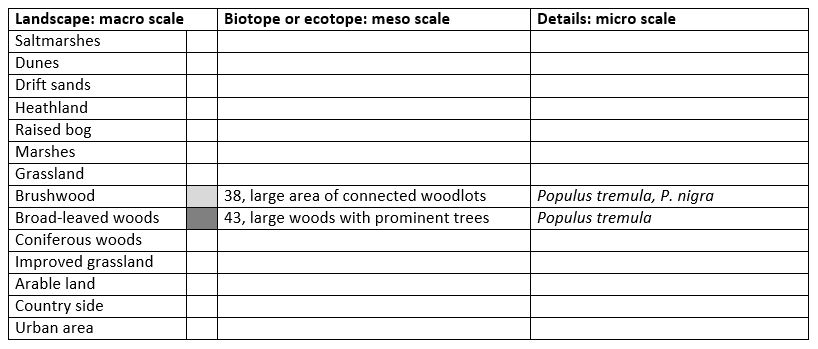
Fig. 91-3. Limenitis populi, climate matrix, heat-sums 400 - 1100°d.
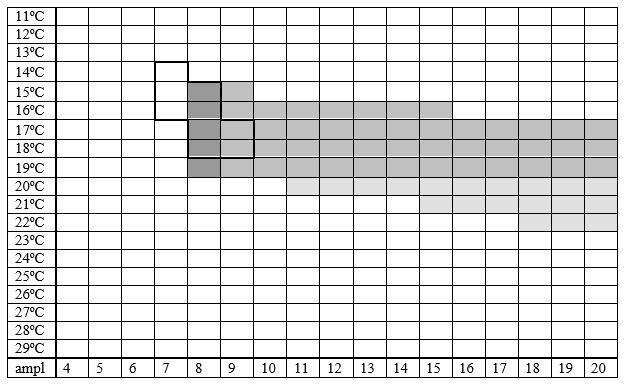
|










